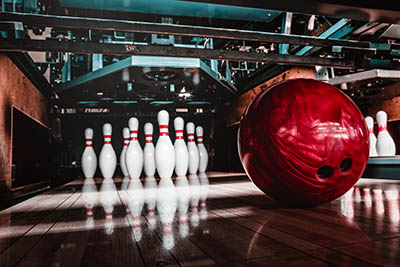
Choosing a bowling ball for the first time can be puzzling and overwhelming. There are loads of decisions: Which brand would be best? Which kind of material should you go for? What sort of core is ideal? What ball can provide the hook potential, and how could you pick the right ball for the hook? What weight of the ball is ideal? Simply read this article to find out about some of the fundamental ideas behind picking a bowling ball and what you need to consider before choosing an ideal bowling bowl. Relax; in reality, it’s a lot simpler than it appears.
Selecting the ball type
The principal question you will need to ask yourself is, “What sort of ball am I searching for?” We can answer that effectively by posing a second question: “Would you say you are learning how to hook the ball or throwing it straight?”
In case you are throwing it straight, you can pick a polyester ball, also called a plastic ball or spare ball. In case you are figuring out how to hook the ball or need to learn, you can go with an entry-level performance bowling ball. Entry-level balls are the next step from the polyester balls.
Material of the ball
In the bowling alleys, the balls you may find are made up of plastic which is the least expensive material used in bowling balls. While this is frequently suitable for amateurs and youngsters, particularly the individuals who bowl a straight shot with no hook, there are numerous other bowling balls available to be purchased that are made of various other materials with significant added benefits.
Urethane balls
Urethane bowling balls have a soft coverstock or external shell, producing more friction on the lane thus giving them better potential for hooking. (A hook is vital to hitting strikes all the more steadily.) Likewise, the urethane ball will roll more uniformly than plastic, and it will have more prominent pin carry at the focal point, which means they will knock down more pins and divert less.
Reactive resin balls
Reactive resin balls are somewhat a new creation that uses additional particles on the coverstock of a urethane ball. These particles on the coverstock helps in creating friction with the lane surface which gives you the chance for more hooking activity. Reactive resin balls are handier; they have a sturdy hook on dry lanes and can likewise be used in oily conditions, where they will have more slide (creating immense speed).
Particle balls
Another type of bowling ball is a particle bowling ball which is a kind of a reactive resin ball with a slight change. It has little bits of glass or ceramics that are incorporated in the coverstock, which further builds the friction. This leads to significantly more grip on oily lane conditions, expanded force, and surprisingly more noteworthy hook potential. Particle bowling balls are used by skilled bowlers and it is the ball of choice for many experts.
Determining the weight
Whenever you want to track down the ideal ball, you may need to track down the ideal weight. This is presumably the most common concern while choosing a ball. One exciting point before picking the weight is that you’ve never used a ball drilled explicitly for your hand/fingers, and consequently, many individuals think they need a lighter ball than they do.
As most house balls have massive finger holes and have relatively quite short spans which make the individual grip the ball tightly. The ball made specifically for your fingers may feel around two pounds lighter than the normal house ball. This is why you need to determine the weight of the ball that is ideal for you.
Types of grip and which one to choose?
You can decide on two sorts of grips for your bowling ball: a conventional grip or a fingertip grip. A conventional grip is where you will put your thumb right into the ball and your center and ring finger into about the second knuckle. A fingertip grip means that the thumb goes right into the ball and your center and ring finger go into about the first knuckle. It’s suggested that you acquire “inserts or plugs” if you decide to go for the fingertip grip. Inserts help you in creating extra friction which is ideal for the hook.
If you pick a polyester/plastic ball as the ball type, you should think about using a conventional grip. If you are hoping to hook with your ball, you should seriously think about using the fingertip grip with or without inserts.
Getting the ball drilled
The best game plan here is to go to your neighborhood bowling alley where you can find a professional retailer of the bowling balls. The retailer will watch you throw a couple of balls to see your style. This is because everyone has a different and unique style and watching you bowl will assist in deciding the drilling design that is appropriate for you.
After that, you will need to get your fingers and length measured. This is done by basically using a measuring ball which they will have at the pro shop. Once you’re done with all the stuff, it may require a day or two for the ball to be prepared.
Now that you are aware of all things that you need to know before buying the bowling ball, it is time to buy some other bowling accessories as well such as bowling shoes, bags, towels etc. All these things can help you in becoming a professional bowler.
Conclusion
To find out which bowling ball is best for buying, you need to go to the nearby bowling alley and you need to try different bowling balls that may help you to understand the differences between various balls much more clearly. Consult the professionals there in the alley and ask them about different core types and coverstocks of the ball. Experiencing the differences yourself would help you choose an ideal bowling ball according to your style.
Story by Amandeep Kaur










